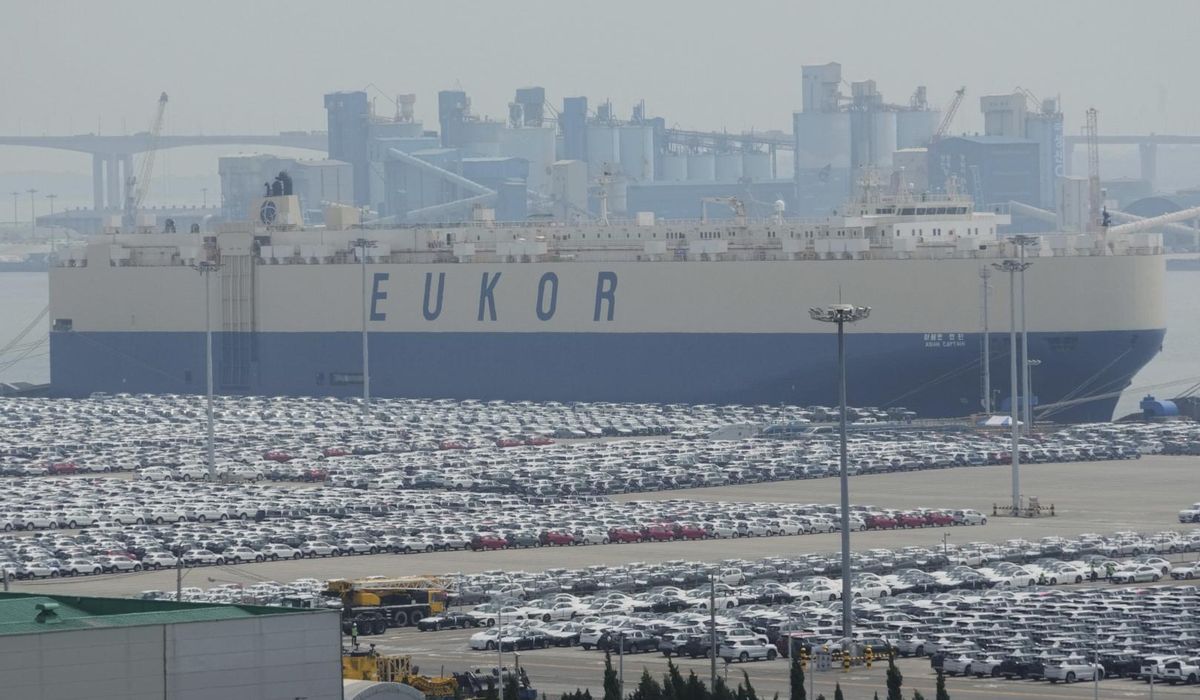


Japan’s major trade deal with President Trump is heaping pressure on South Korea to strike its own agreement to stave off sky-high tariffs on goods it sends to U.S. markets.
Seoul is racing against an Aug. 1 deadline to ink a pact that, like Japan, knocks down the U.S. tariff rate from 25% to 15% or lower.
“Korea is under enormous pressure to seal its own deal with Washington before August 1. But not any deal. It will need to show its people that it was able to secure at least a deal as good as Japan’s, if not better,” said Wendy Cutler, vice president at the Asia Society Policy Institute, a think tank in Washington.
Commerce Secretary Howard Lutnick on Thursday pointed squarely at across-the-sea competition with Japan as a catalyst for the South Koreans ahead of meetings with U.S. negotiators.
“You can hear the expletives out of Korea when they read the Japanese deal, because the Koreans and the Japanese, they stare at each other,” Mr. Lutnick told CNBC. “They were like, ‘Oh man.’”
South Korea is reportedly considering a proposal to invest $100 billion in the U.S. as part of the negotiation.
The investment package would include commitments from conglomerates Samsung Group, SK Group, Hyundai Motor Group and LG Group, according to Yonhap News Agency, which cited industry sources.
Japan managed to knock down its tariff rate from 25% to 15% by promising to open its markets to U.S. goods and invest $550 billion in U.S. projects.
Although Japan’s investment is far larger than South Korea’s reported proposal, the amounts would be commensurate with the sizes of each country’s economies.
U.S.-South Korea talks hit a snag on Thursday, when “two plus two” negotiations between the sides had to be postponed due to Treasury Secretary Scott Bessent’s schedule.
However, Mr. Lutnick said he would be meeting with South Korean negotiators while the Bessent meeting was rescheduled.
Victor Cha, the president of geopolitics and foreign policy at the Center for Strategic and International Studies, said South Korea had been “flailing” of late in attempts to get meetings and hammer out a U.S. deal.
“They tried to do a meeting at the G7, and Trump left early. There was another opportunity at NATO but the Koreans decided not to go,” he said, referring to June summits in Canada and Europe.
The clock is ticking. Mr. Trump is setting tariff rates and striking deals ahead of his Aug. 1 deadline to impose new rates. He’s vowed not to extend the deadline.
In many cases, he is setting tariff rates on imports from select nations instead of working out complex deals.
Mr. Trump late Wednesday suggested the floor for those tariffs would be 15%, instead of the current blanket rate of 10%, while some countries could face tariffs as high as 50% on their products.
The president has negotiated arrangements with the U.K., Vietnam, Indonesia, the Philippines and Japan that knock down tariff rates in exchange for investments or greater market access in those countries for U.S. goods.
Japan managed to get the tariff on its critical automobile exports down to 15%, too, instead of Mr. Trump’s standard rate of 25% on cars.
The Koreans would like the same deal.
“The main thing is the auto tariffs. They want them off, it’s killing them,” Mr. Cha said. “[The automakers] can’t work with 25%. They can work with 15% if it’s stable.”
Tariffs are a tax or duty paid by importers on goods they bring in from foreign markets.
Mr. Trump says tariffs are a great way to force companies to return to America or keep their operations in the U.S., employ American workers and create revenue to fund domestic programs.
Foreign countries don’t pay the tariffs directly to the U.S. Treasury. In many cases, U.S. companies will pay the levies, and they might pass on at least some of the cost to consumers through higher prices.
So far, there hasn’t been major systemic inflation from the tariffs, though some companies said they have had to pass on price hikes.
Besides South Korea, Mr. Trump is trying to manage high-stakes negotiations with the European Union, a major trading bloc, and he is sending a delegation to Stockholm, Sweden, next week to continue talks with China.
The Chinese ambassador to the U.S., Xie Feng, said Vice Premier He Lifeng will be in Sweden from July 27 to July 30 to lead trade talks for the Chinese side.
“The two sides will leverage the role of the China-US economic and trade consultation mechanism, and continue to engage in consultations on economic and trade issues of mutual concern based on the principle of mutual respect, peaceful coexistence and win-win cooperation,” Mr. Feng said on X.
• Tom Howell Jr. can be reached at thowell@washingtontimes.com.
